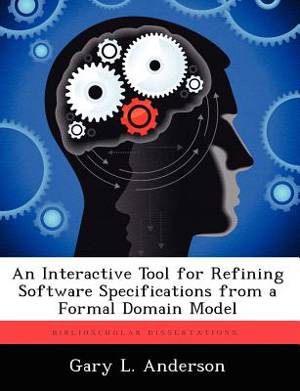
- Afhalen na 1 uur in een winkel met voorraad
- Gratis thuislevering in België vanaf € 30
- Ruim aanbod met 7 miljoen producten
- Afhalen na 1 uur in een winkel met voorraad
- Gratis thuislevering in België vanaf € 30
- Ruim aanbod met 7 miljoen producten
Zoeken
An Interactive Tool for Refining Software Specifications from a Formal Domain Model
Gary L Anderson
Paperback | Engels
€ 54,45
+ 108 punten
Omschrijving
This work examines the process for refining a software specification from a formal object-oriented domain model. This process was implemented with interactive software to demonstrate the feasibility and benefits of automating what has been a tedious and often error-prone manual task. The refinement process operates within the framework of a larger Knowledge-Based Software Engineering system. A generic object-oriented representation is used to store a domain model, which allows the specification tool to access, select, and manipulate the required objects to form a customized specification. The specification is also stored as an object-oriented model, which in turn can be accessed by a design tool to transform the specification into source code. The tool has been designed as an interactive program that helps guide the user through the process of building the specification. The tool has been named the Elicitor-Harvester because of the functions it performs. It elicits application requirements from the user and harvests pre-existing knowledge from the formal domain.
Specificaties
Betrokkenen
- Auteur(s):
- Uitgeverij:
Inhoud
- Aantal bladzijden:
- 126
- Taal:
- Engels
Eigenschappen
- Productcode (EAN):
- 9781249586197
- Verschijningsdatum:
- 3/10/2012
- Uitvoering:
- Paperback
- Formaat:
- Trade paperback (VS)
- Afmetingen:
- 189 mm x 246 mm
- Gewicht:
- 240 g

Alleen bij Standaard Boekhandel
+ 108 punten op je klantenkaart van Standaard Boekhandel
Beoordelingen
We publiceren alleen reviews die voldoen aan de voorwaarden voor reviews. Bekijk onze voorwaarden voor reviews.











